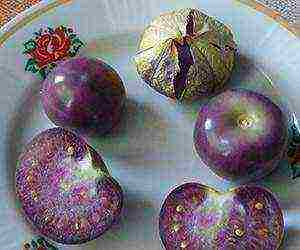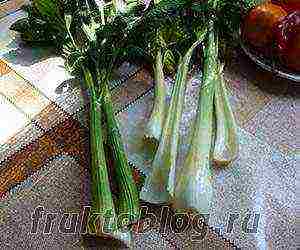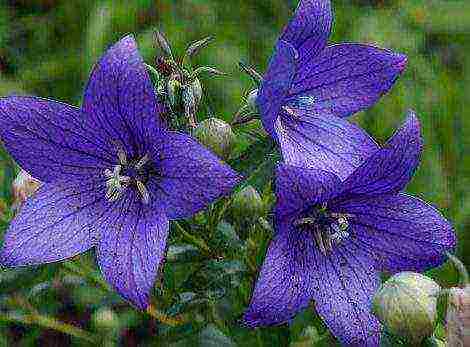Content
The flora of the Krasnodar Territory is really rich and diverse. Especially in spring, looking at the flourishing plains, dense forests, vineyards, it is easy to imagine what Paradise would look like, what it could be. An amazing combination of modern cities with developed economies and wild corners of nature, which, unfortunately, are becoming less and less numerous. Human activities cannot but reflect on the life of the region. Many plants are already marked as an endangered species, forests are regularly cut down, cities are growing, villages are developing, the population of the Krasnodar Territory is increasing as a whole. Therefore, the defenders of nature do not get tired of repeating: if a person considers himself “the king of nature” and its conqueror, he must take care of it. After all, everything is interconnected and when one of the components of the chain of the cycle of events is violated, the rest also suffer.
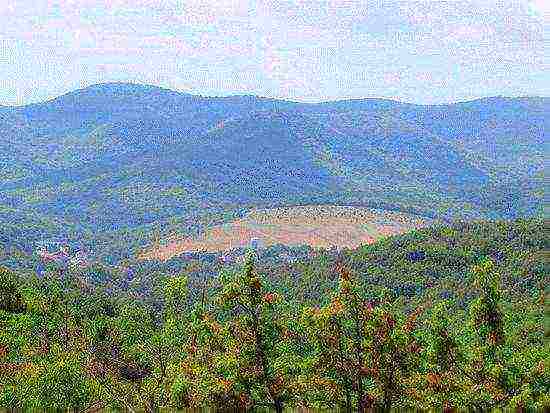
Steppes, forests
In the region there are vast steppe zones, where you can find bushes typical of plains and hills, and individual plants. This is vetch, and timothy, and steppe feather grass. Reeds are found along the shores of lakes and swamps. On the plowed areas, agricultural crops are grown annually: these are wheat, corn and barley, as well as sugar beets and castor oil plants. There are vegetable gardens where vegetables grow on fertile land. The medicinal industry is also developed, for the needs of which medicinal herbs are grown separately.

In the forest zone, you can see broad-leaved oaks, mountain firs and beautiful spruces, and if you climb high, go out to alpine meadows. Only mountain goats and rams roam there, for which the high-altitude zones are their home.
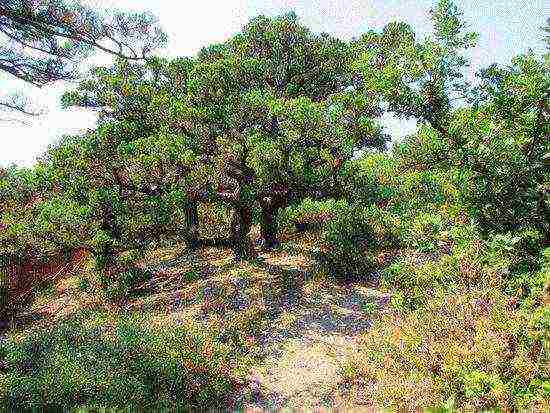
It is curious that in the area of the Taman Peninsula you can also see steppe vegetation, for example, the same sage or polynya. The sandy shores are full of licorice with bluehead, alfalfa with timothy, sometimes camel thorn. In some places, thickets of trees and shrubs add variety to the steppe picture. The vast plains have been invaded by cultivated vegetation, and they are increasingly being adapted for fields.
In the estuaries, the level of humidity is quite high, it is not even afraid of droughts, when the water level drops, but then replenishes with the arrival of rains. Aquatic plants do not experience a strong lack of water. Here you can find lilies, nymphs with water walnuts, duckweed with salvinia, and other types of algae. The banks are densely covered with reeds, kuga, cattails are found, and marsh wormwood can be found. And next to Primorsko-Akhtarsk there is a unique place where you can find real lotuses, a beautiful and useful plant.
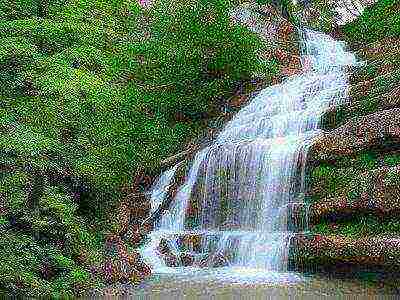
Of course, fifteen, five meters - what are these waterfalls ?! What a marvel! But each of them became known for their individual characteristics: small spool but expensive! But in the region there are many and truly large waterfalls.
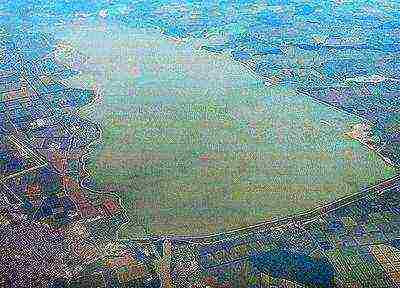
There are seven reservoirs in the Krasnodar Territory - Atakayskoye (Verkhovoye and Nizovoye), Varnavinskoye, Krasnodarskoye, Kryukovskoye, Shapsugskoye and Neberdzhaevskoye.
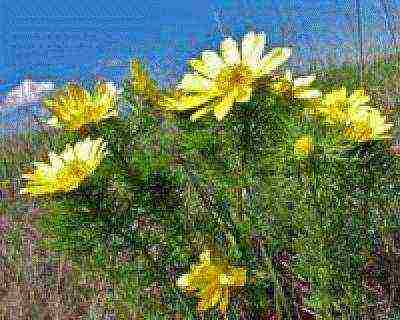
The Krasnodar Territory also has its own Red Book. Among the variety of plants found there, there are also rare species that need special protection.
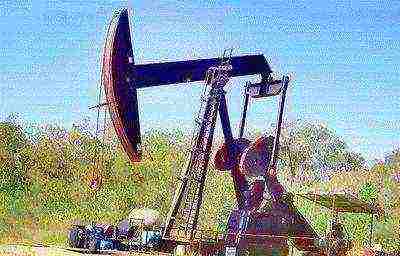
The lands of the Krasnodar Territory are full of natural resources, the extraction and processing of which makes it possible for the Kuban to develop and supplies the industry with important raw materials.
Related materials:
Have you noticed an error or information that is out of date? Please,
inform
us about it
I often come across a question among blog readers: what is growing in the Krasnodar Territory? What vegetables can be planted in the Kuban, what fruits?
These questions are especially relevant for readers who have moved south from the northern regions. And for the readers who have become the owners of the land and are starting to develop it for the first time.
In this article, I have made a brief overview of all the crops that are familiar to me and that we have planted ourselves. I hope this article will be helpful and answer your questions.
At the end of the article, you can find links to related topics.
When you first grow on your own land, we are driven by curiosity. I want to plant everything at once. Find something new to your taste, surprise and surprise your family and friends. Sound familiar?
Yes, we are all like that, true lovers of land and home products. And if the climate allows you to grow exotic fruits, then why not try it?
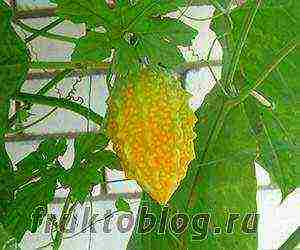
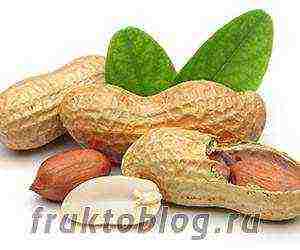
In this note, I made a general list of what grows in the gardens of the Krasnodar Territory. Namely, in its eastern part. Because I know that to the south the list of exotic cultures is even greater. It's warmer there.
I will write about vegetables that can be safely grown in the open field and which we have already planted ourselves. We don't have a greenhouse.

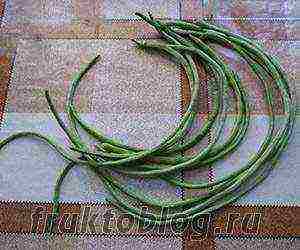
For ease of reading, I placed all the information in the table and added a small hint: when and how we plant these crops.
What can be grown in the gardens of the Kuban


What fruits grow in the Krasnodar Territory
Popular fruits: watermelons, melons, apples, pears, plums, cherry plums, apricots, peaches, cherries, cherries
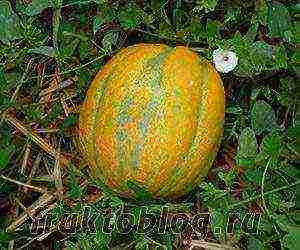
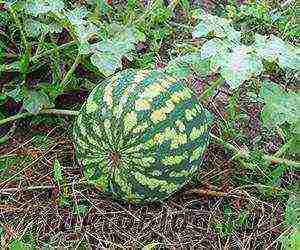
Less popular fruits: heenomeles (Japanese quince), medlar, figs, unabi (Chinese date)


Common berries: currants, yoshta, blackberries, raspberries, gooseberries, grapes
Northern berries: irga, blueberry, honeysuckle
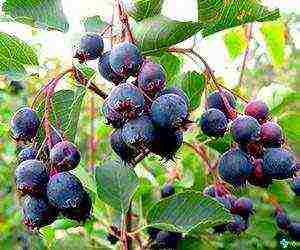
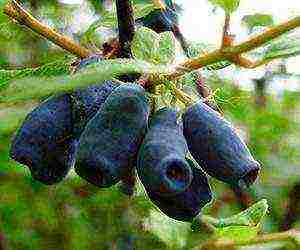
As well as: mulberry, hawthorn, dog rose, viburnum, mountain ash, bird cherry, dogwood, sea buckthorn
And, I am sure, there are still many different exotic plants growing in our region, which we have not yet tried to grow. If we try something new, I will definitely add it to this table.
I invite readers to supplement this list in the comments. What did you grow? What did you like?
I wish everyone delicious southern harvests!
The flora of the Krasnodar Territory.
According to scientists, more than 3000 plant species are found in the Krasnodar Territory. This is due to the geographical location, the variety of landforms and climatic conditions. The main types of vegetation in the region are flat and mountainous. Since the flat part of the region is located mainly in the steppes, it is characterized by a herbaceous type of plants.
Plain vegetation.
A vast part of the territory in the northern part of the region is occupied by steppe vegetation. It stretches from the borders of the Rostov region to the banks of the Kuban River. Now, in places where steppe feather grass, wheatgrass, vetch, timothy grass used to grow, bread grows on plowed lands. Herbs with medicinal properties are specially grown in the fields as raw materials for the medicinal industry. On the banks of the rivers in the past there were hazel, wild almonds, and thorns formed impenetrable thickets. Permanent felling, forest fires have destroyed a large amount of woody vegetation. Now on the watersheds of the plains you can find oak, elderberry, thorn, wild rose, blackberry, etc. Along the river valleys - willow, willow, black and white poplar, alder. Steppe vegetation with the presence of sage and wormwood is also found within the Taman Peninsula. On the sandy shores, licorice, bluehead, alfalfa, timothy grow, and sometimes even camel thorns can be found. In some places there are rare thickets of trees and bushes. The vast plains are dominated by cultivated vegetation. The Azov region is a floodplain and meadow-bog complexes. Due to sufficient moisture, the estuaries of the Azov Sea are rich in aquatic vegetation. For example, these are lily, nymphaean, water walnut, duckweed, salvinia and varieties of algae. The banks of estuaries are overgrown with reeds, cattails and kuga, which is also called marsh wormwood.Not far from the town of Primorsko-Akhtarsk, near the Sadki hunting farm, there is one of the unique places where lotuses grow. It is a medicinal plant, and in Egypt and India its fruits are eaten. A significant part of the marshes and small estuaries are now drained and used for growing rice. Areas of forest plants in the Azov region are found not far from the village of Maryanskaya, in the Krasny Les protected hunting area. Maple, apple, pear, poplar, willow, viburnum, etc. grow here. Sometimes you can find oaks in 5 girths. Along the channel of the Kuban River and its left tributaries, there are floodplain meadows with trees and bushes. Remains of forests in the Kuban floodplain are also preserved in forest park zones. Among them are Pavlovsk and Kirghiz floodplains, the Krasny Kut forest park, located in the residential districts of Krasnodar.
Within the city limits of Krasnodar, the dendarium of the Kuban Agrarian University is of great interest. It was founded in 1959 and covers an area of 73 hectares. It contains 1200 species of plants, not counting herbaceous ones. About 140 species were brought here from different parts of Russia and other countries of the world.
The vegetation of the Trans-Kuban plain before human intervention was broad-leaved forests of oak, beech and shrubs. At present, the valley consists of cut-out gentle slopes. The main part of the Trans-Kuban plain is agricultural landscapes. Alder, willow, hawthorn, viburnum, buckthorn, blackthorn, elderberry, wild rose grow along the valleys of the rivers Kuban, Laba, Belaya and their tributaries, and in some places there are thickets of sea buckthorn. On the stretch from the Krasnodar reservoir to the city of Krymsk, south of the Kuban River, there is a strip of Zakubanskaya floodplains, which is almost entirely occupied by rice paddies and fields for growing other crops.
Mountain vegetation.
The steppe and forest-steppe zones of the plain part of the region are replaced in the south by broad-leaved and coniferous forests. Up to 700 meters above sea level, the main type of vegetation is oak. It is the most common tree in the mountains. The oak forms whole continuous forests, covering the foothills and spurs. Many animals eat oak fruits; bark is a valuable medicinal raw material. In addition to oak, there are a lot of ash, elm, hornbeam in the forests. Of the fruit trees, the most common are apple, dogwood, wild cherry, walnut, viburnum, chestnut, and from berries - gooseberries, raspberries, currants. Various herbaceous plants are found in the deciduous forests of the Krasnodar Territory; tall ferns, horsetails, moss. An adult can freely hide in the thickets of burdocks. Other plants pose a danger to humans; when touched with the skin, they leave painful burns (Caucasian ash, cow parsnip).
At an altitude of 1200 meters, oak forests are complemented by beech and fir trees, as well as aspen, alder and maple. Beautiful beeches with a powerful columnar trunk with light gray bark can live up to 300-400 years. The wood of these trees is used in joinery, turning and furniture production. Tar, acetone is also obtained from it. Nuts contain up to 35% oil and are edible in small amounts.
There are coniferous forests up to an altitude of 2000 meters at sea level. These are mainly Caucasian fir and oriental spruce, as well as Nordman fir - an evergreen tree with a straight trunk, the height of which reaches 60 meters. She provides construction and ornamental timber and is used to make paper. Fir needles are used to prepare oils that are widely used in perfumery and medicine. Koch pine is found in open sunny areas. In the basin of the Bolshaya and Malaya Laba rivers, forests of eastern spruce have survived, which lives up to 500-600 years, the trunk diameter reaches 20 meters, and the height is 30 meters. These forests are essential. Spruce wood is used to make musical instruments.
A strip of forest at an altitude of 2000 meters above sea level gives way to subalpine meadows with thick grass cover.Woody vegetation is also found here. These are mainly crooked birch trees, undersized juniper. Most of the subalpine belt is relict. At an altitude of 2300-2500 m above sea level, such meadows are replaced by alpine meadows. Due to the severity of the climate, the herbaceous vegetation is lower and less diverse. The maximum height of the herbs reaches 15 cm. Among them there are some types of bells, skullcap, gentian, Panyutin's mytnik. Many plants are listed in the Red Book. But, unfortunately, the varied agricultural activities, as well as the development of tourism, slightly changed the appearance of the alpine meadows. Weeds appear (hellebore Lobel, alpine sorrel, thistle).
Gradually, with increasing height, the vegetation becomes less and less, only mosses and lichens. At 3000 m, there are gray cliffs covered with snow, and also almost devoid of any plants. Within the Krasnodar Territory, the territory of the Black Sea coast occupies a section from Anapa to the border with Georgia. These places are divided into northern (from Anapa to Tuapse) and southern (from Tuapse to Adler) parts. The vegetation in the Anapa region on the plains is close to steppe, that is, predominantly herbaceous. Sometimes in sandy areas flora is practically absent. Only occasionally are there tamarisk bushes, from herbs - fescue, sage, astragalus, sainfoin. In the area of Novorossiysk and Gelendzhik, vegetation alternates with bare areas, which used to be quite good forests. Currently, the entire territory is plowed up or occupied by settlements. On the southern clone of the Markokht ridge on the territory of the Novorossiysk agricultural enterprise, there is the Sheskharis natural complex. Downy oak, hornbeam and century-old junipers up to 5 meters high grow here.
To the south of Gelendzhik, the forests are better preserved due to the elevation of the relief and the increase in moisture. Further south, such plants as ivy, clematis, smilax, etc. begin to appear. Beech grows at an altitude of 500-600 meters above sea level, and a noble chestnut is found near Tuapse.
The southern part of the Black Sea coast is divided by climatic and natural conditions into the Sochi subtropics and the Prikolkhidsky mountain region. The Sochi subtropics occupy the coast from Tuapse to the Psou River. Thanks to the abundance of the sun, palm trees and yuccas, cork oak, bamboo, magnolia, eucalyptus, mimosa, and Japanese camellia grow here. Scumpia, ivy, cherry laurel, and Pontic rhododendron grow in the forests of this region. Tea and tangerines are grown in the Adler region. In this area, the Yuzhnye Kultury park was founded, where ornamental trees, shrubs are grown, and a family fund is created for landscaping parks and squares. Here is the flora of the entire subtropical belt of the earth. In the near-Kolkhidsky mountainous region, the forest zone is located much lower, it almost adjoins the coastal edge. The territory is covered with woody species. Boxwood groves are widespread up to an altitude of 400-500 m. Figs grow in open rocky areas along river valleys up to a height of 800 meters. In the undergrowth up to an altitude of 2000 m, there is a Pontic rhododendron, a Colchis holly, cherry laurel grows to an altitude of 2400 m Alpine meadows begin at an altitude of 2000 m, and above 2500-2800 bare rocks begin, as well as numerous snowfields and glaciers.
What cultivated plants are grown in the Krasnodar Territory
In chapter Welcome to the question what crops are grown in the Krasnodar Territory? given by the author Daria Tee the best answer is Krasnodar Territory, the breadbasket of Russia.
About 100 types of agricultural crops are cultivated in the region's plant growing.
In physical terms, from the production in the Russian Federation, the Krasnodar Territory gives the Russian consumer about 75% of rice, 40% of grain corn, 27% of sugar beets, 20% of sunflower, 10% of grain, about 50% of grapes, almost all tea, citrus and other subtropical crops ...
Among the main cultivated plants are:
• Cereals. Grain harvesting is a priority for the region. By the end of 2008, a record harvest of 523 thousand tons of grain was harvested.
• Soy. This protein-oilseed crop has received wide fodder, food and technical use in the region.
• Rice. The largest rice-growing complex in the country has been created in the region. There are 235 thousand hectares of engineering-type rice systems in operation.
• Sugar beet. The gross harvest of beets in 2008 amounted to 6122 thousand tons.
• Grape. Viticulture became widespread in the Anapo-Taman zone of the region. 42 specialized farms are engaged in the production of grapes, 22 of which produce wine products. Vineyards occupy 30.8 thousand hectares.
• Potato. In 2008, 487.5 thousand tons of potatoes were harvested in the Kuban, which is 75.5 thousand tons more than last year.
• Vegetables. In 2008, the gross harvest of vegetables amounted to 613.8 thousand tons, which is 140 thousand tons more than in 2007.
• Fruits. 373 collective and private farms are engaged in the production of fruits and berries, 38 of which are specialized.
• Oilseeds. Krasnodar Territory is the Russian leader in sunflower seed collection.
• Tea. Tea plantations are located in the Black Sea zone of the region. Krasnodar tea is listed in the Guinness Book of Records as the northernmost tea in the world.
• Citrus fruits. They are grown in the Black Sea zone of the region. Among the crops grown are oranges, tangerines, and feijoa.
Original source link link
Answer from
2 answers
Hey! Here is a selection of topics with answers to your question: what crops are grown in the Krasnodar Territory?
Answer from Ekaterina Bobina
I cannot make out
Answer from Јilova Elena
corn, quince, blackberry, black currant
Answer from Kirill Baronov
Rice, grapes, corn, sugar beet
Answer from Yuri Makarenko
sugar beet rice sunflower rye wheat tea citrus
Answer from Edgar poxosyan
all clear…. thanks!!!
Answer from Christina Dvornikova
and much more
Answer from
2 answers
Hey! Here are some more topics with the answers you need:
